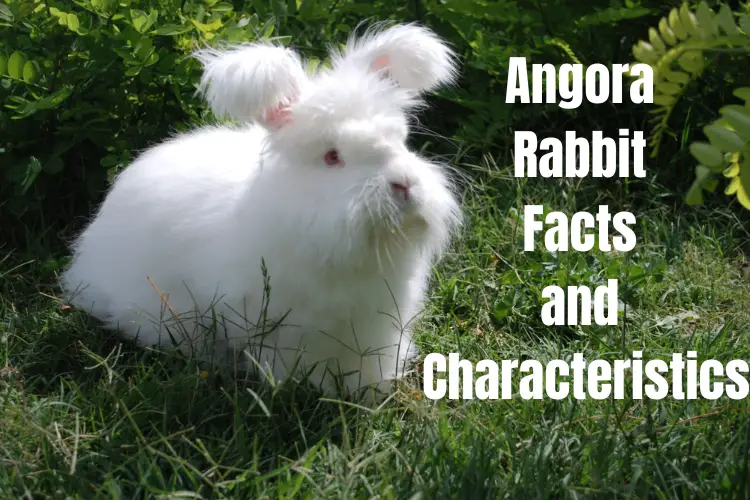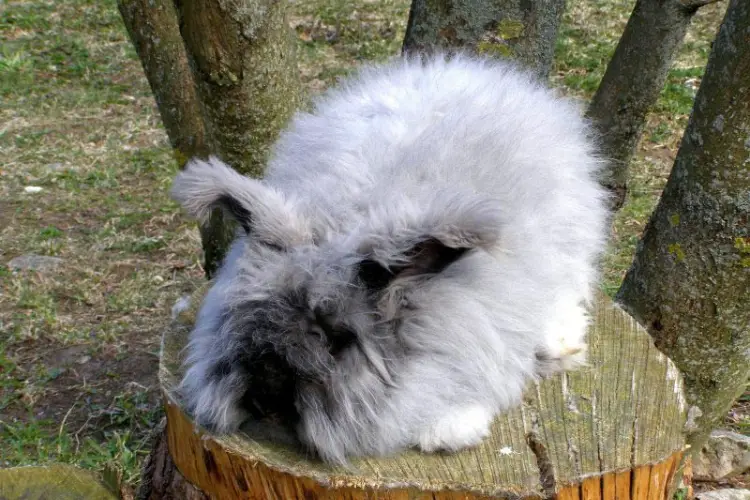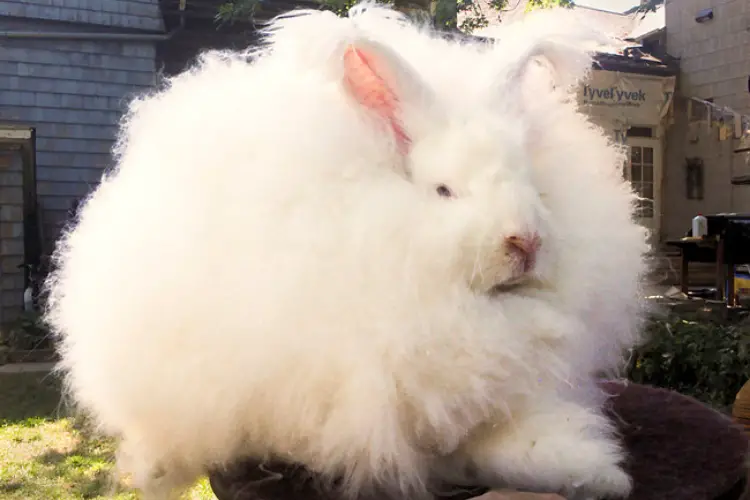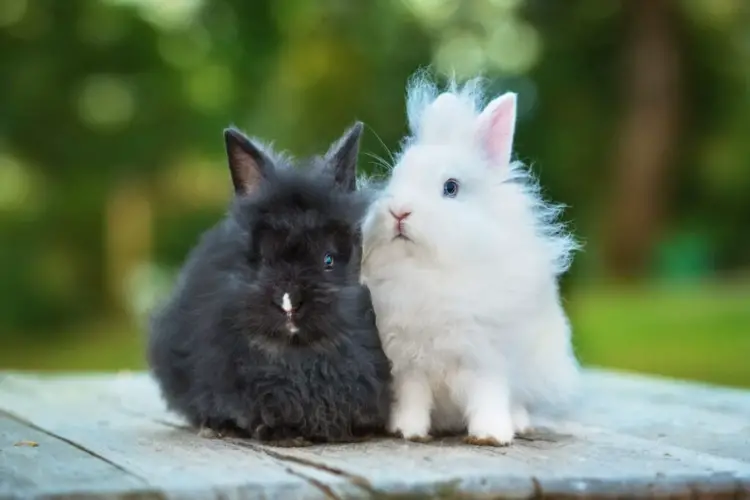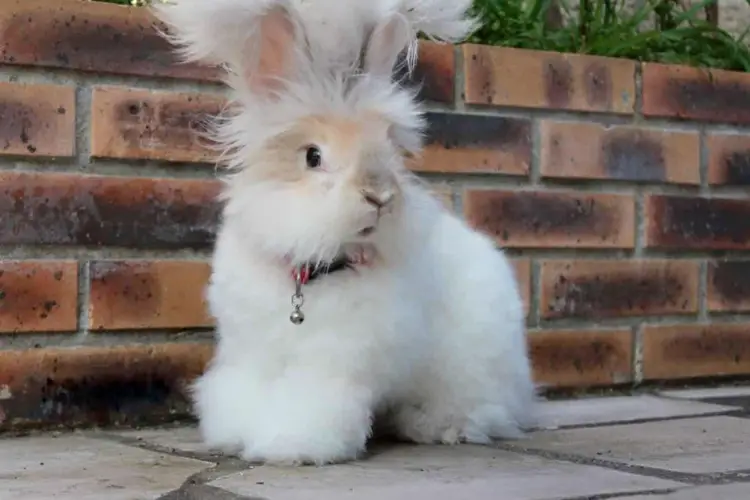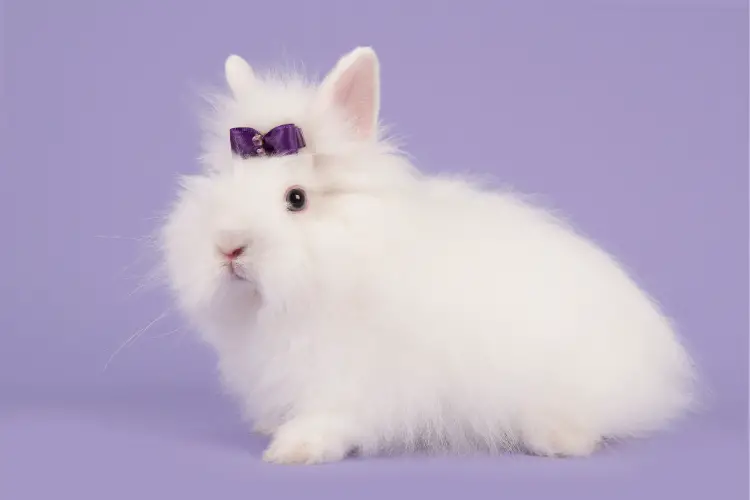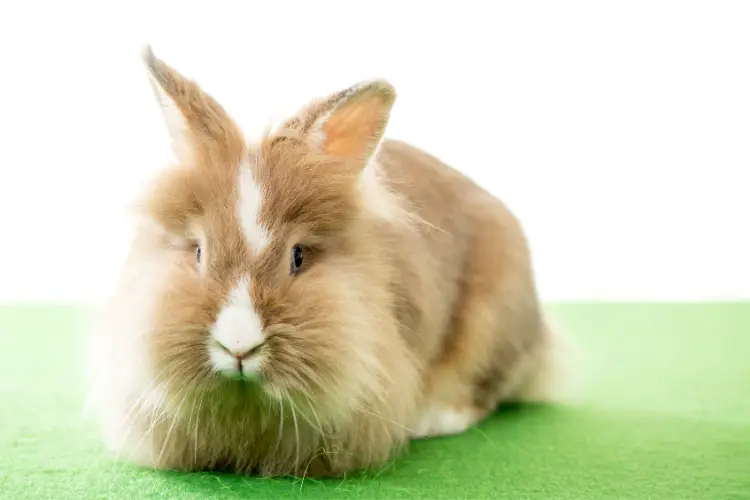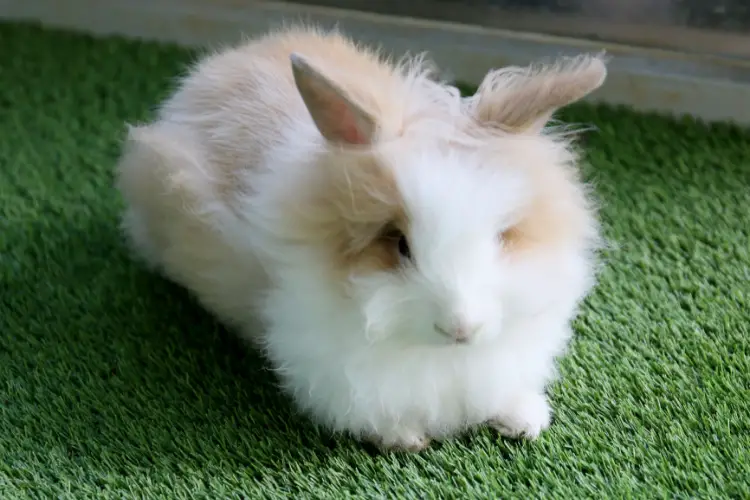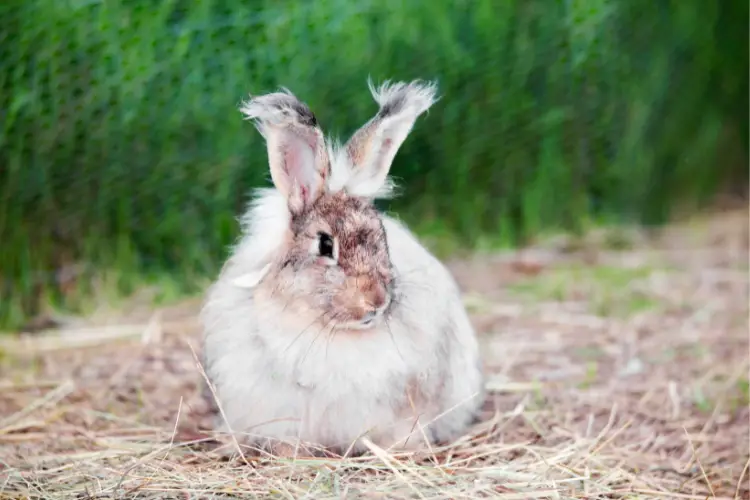The Angora rabbit, with its cloud-like fur and serene demeanor, has captivated hearts and piqued curiosities worldwide. In this blog, we will look into the enchanting world of Angora rabbits, exploring their unique characteristics, historical significance, and the intricacies of their care.
From the luxurious texture of their wool to their gentle temperament, Angora rabbits are more than just a pretty face; they are a symbol of elegance and a testament to the harmonious relationship between humans and domesticated animals.
Key Takeaways
- Angora rabbits are distinguished by their extraordinary fur that can grow to record lengths, necessitating regular grooming to prevent matting.
- They are medium-sized, weighing between 5 and 10 pounds, and are known for their calm and friendly temperament, making them ideal family pets.
- The wool of Angora rabbits is comparable to cashmere in softness and is available in a wide range of colors, including white, black, blue, chocolate, and fawn.
- Originating from Turkey, Angora rabbits are one of the oldest domestic rabbit breeds, valued for their wool which is a highly prized textile material.
- Sustainable and ethical care practices are crucial for the health and happiness of Angora rabbits, ensuring their well-being and the quality of their wool.
Interesting Facts About Angora Rabbits
Historical Tidbits
Angora rabbits have a rich history that intertwines with human civilization. Their origins can be traced back to Ankara, Turkey, where they were first domesticated for their soft and luxurious wool.
Over the centuries, these rabbits have been bred and cherished not only for their fiber but also for their endearing qualities as pets.
Ankara, previously known as Angora, is the namesake of these fluffy creatures, highlighting the significance of their geographical roots. The city was a hub for the trade of Angora wool, which was highly prized across Europe, particularly during the French Revolution when it became a symbol of status and elegance.
Here is a brief timeline of the Angora rabbit’s journey:
- 18th Century: Introduction to Europe by sailors.
- Early 19th Century: Rise in popularity in France.
- Mid-19th Century: Spread to other parts of Europe and North America.
- 20th Century: Development of different Angora breeds.
Remarkable Traits
Angora rabbits are renowned for their distinctive characteristics that set them apart from other rabbit breeds. Their extraordinary fur is perhaps the most notable trait, with a capacity to grow to impressive lengths, providing both beauty and warmth. The Ruby-eyed White Angora, in particular, has been known to achieve record-breaking fur measurements.
Beyond their stunning coats, Angoras exhibit a range of personality traits that endear them to their owners. They are often described as calm and serene, displaying a sociable nature that thrives on human interaction.
Their affectionate disposition allows them to form close bonds, making them not just pets, but cherished companions. When considering an Angora for competitive shows, several aspects are crucial for success:
- Coat: Length, density, and texture are paramount.
- Conformation: The body shape must align with breed standards.
- Health: A robust physical condition and cleanliness are essential.
- Color/Markings: Breed-specific color standards must be adhered to.
- Temperament: Behavior in a show setting is a key factor.
These rabbits are not only celebrated for their appearance but also for their outstanding personalities. While they may not be very large, their fur and unique features, such as the characteristic “lop” ears of some breeds, make them truly special.
Notable Angora Individuals
Throughout history, certain Angora rabbits have gained recognition for their unique characteristics and contributions to the breed’s legacy. Franchesca is one such individual, known for her exquisite tortoiseshell patterning, which has made her a notable figure in the Angora community.
In addition to their aesthetic appeal, some Angoras have achieved fame for their record-breaking fur lengths. The Ruby-eyed White Angora, in particular, has set standards with its fur reaching impressive lengths.
This trait not only showcases the breed’s luxurious coat but also highlights the importance of proper grooming to maintain their well-being.
The impact of these rabbits extends beyond individual accolades. In China, for instance, there are more than 50 million Angora rabbits, producing significant quantities of wool annually. This production is a testament to the breed’s importance in the textile industry:
| Country | Angora Population | Annual Wool Production (tonnes) |
|---|---|---|
| China | >50 million | 2,500–3,000 |
Their prominence as pets has also surged, reflecting the Angora’s special place in the hearts of rabbit enthusiasts and their cultural significance in literature and art.
Angora Wool: Characteristics and Colors
Comparison with Other Fabrics
Angora wool stands out in the textile world for its exceptional qualities. The wool is finer and softer than cashmere, offering a luxurious feel that is highly prized in the fashion industry.
Its insulating properties are superior due to the unique structure of its hollow fibers, making it an ideal choice for garments intended to provide warmth without bulk.
In terms of drying speed, Angora yarn fabric has a practical advantage. Compared to other natural fibers like wool, Angora dries relatively quickly, which can be beneficial in various situations, from outdoor activities to daily wear in cooler climates.
Here’s a quick comparison of Angora wool with other popular fibers:
- Softness: Angora is softer than cashmere and sheep’s wool.
- Warmth: Offers better insulation due to hollow fibers.
- Drying Speed: Dries faster than many other natural fibers.
These characteristics make Angora wool a sought-after material for creating cozy, high-end winter accessories such as sweaters, hats, and scarves.
Variety of Colors
Angora rabbits are celebrated not only for their luxurious wool but also for the vast spectrum of colors they exhibit. The palette ranges from pristine whites to deep blacks, encompassing a variety of hues such as blue, chocolate, and fawn. Each color category can be further divided into sub-varieties, adding to the richness of the selection.
For instance, the Agouti coloration mirrors the wild rabbit’s brown, interlaced with bands of black, tan, fawn, and blue, creating a natural and intricate pattern.
The ‘Broken’ pattern features a predominantly white coat with patches of another color, while ‘Pointed White’ rabbits are characterized by their white bodies accented with colored points on the muzzle, feet, and ears.
Here is a list of some common Angora rabbit colors and patterns:
- Agouti
- Broken
- Pointed White
- Self (solid color)
- Shaded
- Ticked
- Wide Band
Each color and pattern offers a unique aesthetic, with some, like the Shaded variety, presenting a gradient of color that darkens towards the extremities. The ‘Ticked’ pattern showcases a solid-colored body with guard hairs of a contrasting color sprinkled throughout. The ‘Wide Band’ variant resembles the Agouti but lacks the dark-tipped hairs, giving it a distinct appearance.
Unique Features of the English Angora
The English Angora stands out among its peers for its distinctive wool and size. It is the smallest recognized Angora breed, typically weighing up to 7.5 pounds. This breed is not only prized for its soft and silky wool but also for its facial and ear furnishings that give it a unique appearance in the rabbit world.
The wool of the English Angora is renowned for its length, softness, and warmth, often compared to cashmere. It can grow up to 3 inches long and requires regular grooming to prevent matting. This grooming process not only maintains the wool’s quality but also fosters a bond between the rabbit and its owner.
Here are some of the colors in which the English Angora can be found:
- White
- Black
- Blue
- Chocolate
- Fawn
Owners of English Angoras often speak of their intelligence and affectionate nature. They are capable of forming tight bonds with their humans, making them ideal pets for those willing to invest time in their care and grooming.
Behavior and Temperament of Angora Rabbits
General Disposition
Angora rabbits are renowned for their gentle and docile nature, making them excellent companions for those who appreciate a calm pet. They typically exhibit a laid-back temperament, often described as serene and affectionate.
This makes them particularly suitable for families and individuals seeking a low-maintenance, yet interactive furry friend. Their sociability extends to a fondness for human company, and they are known to form close bonds with their owners.
It’s important to note that while they are generally calm, quiet, and easy to handle, individual personalities can vary. Some may be more inquisitive and active, while others prefer to lounge and be pampered.
Health and happiness are closely tied to their environment and care. Common minor conditions affecting Angoras include dry or itchy skin and parasite infestations, while more serious concerns can involve dental disease and gastrointestinal issues. Regular check-ups and a well-maintained living space are essential for their well-being.
- Calmness: Often display a serene demeanor
- Sociability: Enjoy human company
- Affection: Form close bonds with owners
- Health: Prone to certain conditions without proper care
Interaction with Humans
Angora rabbits are known for their sociability and often form close bonds with their owners, displaying a serene demeanor that makes them delightful companions. If a rabbit rubs their chin on you, it’s a sign of affection and your bunny’s way of saying that you’re important to them.
This behavior, as noted in ‘Understanding Rabbits: From Behavior to Basic Needs’ by Kavee, is a rabbit’s way of claiming you as their own.
Daily interaction is not only enjoyable but essential for an Angora’s emotional well-being. Handling them gently and regularly helps to keep them tame, while providing toys and interaction satisfies their natural curiosity. Here are some tips for interacting with your Angora rabbit:
- Engage in regular grooming sessions to keep their fur in good condition and to reinforce the bond.
- Handle your Angora with care, as they can be shy with rough or sudden movements.
- Ensure a balanced environment that offers both stimulation and quiet time, which is important for their overall well-being.
Care Requirements
Caring for an Angora rabbit is a commitment that involves meticulous grooming and attention to their living conditions. Daily grooming is essential to prevent matting and to maintain the rabbit’s luxurious coat.
A grooming session typically includes brushing with a gentle bristle brush, detangling with a wide-toothed metal comb, and using a slicker brush for the deeper layers of fur. It’s also important to regularly trim their nails and check for any signs of skin issues.
The living space for an Angora rabbit should be kept clean, dry, and spacious to allow for adequate exercise. Regular shearing, keeping the wool length between 8-12 centimeters, is crucial to prevent tangling and matting, especially in areas like the belly and behind the ears.
Maintenance also involves monitoring the rabbit’s physical health, temperament, and fiber quality, particularly for breeders.
To ensure proper care, here’s a list of grooming essentials:
- Gentle Bristle Brush
- Wide-Toothed Metal Comb
- Slicker Brush
- Angora-Specific Grooming Scissors
Lastly, keeping detailed records of each grooming session, including the date and any notable observations, can help track the rabbit’s health and maintenance needs over time.
Origins and Historical Significance
The Turkish Connection
The Angora rabbit, with its origins in Ankara, Turkey—historically known as Angora—is renowned for its luxurious wool, which has been a prized commodity since ancient times. The breed’s ancestry in Ankara links it to the region’s famed wool production, a testament to the rabbit’s significant role in Turkish history.
Beyond its economic value, the Angora rabbit has also made a cultural impact, from its depiction in art and literature to its status as a beloved pet. The breed’s journey from the Turkish landscape to the homes of European nobility marks a fascinating chapter in the history of domesticated animals.
- Historical Significance:
- Originated in Ankara, Turkey
- Associated with luxury and nobility
- Spread across Europe due to demand
- Cultural Impact:
- Featured in literature and art
- Symbolizes purity and innocence
- Gained popularity as a domestic pet
Angora Rabbits as Domestic Pets
Angora rabbits have carved a niche for themselves in the hearts of pet enthusiasts, not only for their incredible fur but also for their gentle and docile nature. These rabbits are cherished for more than their wool; they are loved as companions.
As domestic pets, Angoras require a specific care regimen that includes a fiber-rich diet and ample space to thrive. Their grooming needs are substantial due to their long fur, which necessitates regular attention from their owners. The commitment to their well-being ensures both the production of high-quality wool and a happy, healthy life for the rabbit.
The popularity of Angora rabbits as pets has surged, reflecting their special status among domestic animals. Below is a list of attributes that make Angoras particularly appealing as pets:
- Soft temperament
- Distinctive woolly coats
- Requirement for regular grooming
- Need for a spacious living environment
- Diet rich in fiber
The Value of Angora Wool
Angora wool stands out in the textile industry for its exceptional qualities. The wool is finer and softer than cashmere, making it a sought-after material for luxury garments. Its hollow fibers provide superior insulating properties, ensuring warmth without the bulk.
The economic value of Angora wool is significant. The Angora’s plentiful fur can sell for as much as $16 per ounce, and each Giant Angora can produce up to 40 ounces a year. When the wool is spun and processed, it can be used alone or blended with other fibers like cashmere to enhance durability and texture.
Here’s a comparison of 100% Angora yarn and Angora blends:
- 100% Angora yarn offers unmatched softness and is typically used for high-end luxury garments.
- Angora blends are popular for adding warmth and reducing cost without significantly compromising the fabric’s feel.
Conservation and Sustainable Practices for Angora Rabbits
Ensuring Health and Happiness
The cornerstone of Angora rabbit care is a commitment to their health and happiness. This involves regular health screening to prevent hereditary diseases and providing a habitat that allows for natural behaviors.
A spacious environment is not just a luxury, but a necessity for these fluffy companions, ensuring a high quality of life.
In terms of lifespan, a well-maintained Angora rabbit can enjoy a vibrant life. Owners must be diligent in providing proper nutrition, a clean and dry living area, and ample space for exercise. It’s also crucial to cater to their social needs, as these are social animals that thrive on interaction.
- Health Screening: Regular checks to prevent diseases
- Habitat: Spacious environments for natural behavior
- Nutrition: Balanced, fiber-rich diet
- Cleanliness: Dry and clean living areas
- Exercise: Sufficient space for physical activity
- Social Needs: Interaction and gentle handling
By adhering to these care principles, we not only ensure the well-being of our Angora rabbits but also contribute to the sustainability of wool production.
Grooming and Maintenance
The secret to perfect grooming for Angora rabbits lies in the consistency and quality of care. Daily grooming is essential, involving gentle brushing to remove loose hairs and prevent matting. A thorough skin and coat examination is crucial to detect any signs of mites, sores, or matting early on.
Regular nail clipping is also a part of the routine, ensuring the rabbit’s comfort and health. When selecting tools, the slicker brush comes highly recommended for its ability to gently remove loose fur and smooth out small tangles.
It’s important to have a variety of grooming essentials, including a gentle bristle brush, a wide-toothed metal comb for detangling, and Angora-specific grooming scissors for safe and precise trimming tasks.
Proper maintenance is key to preventing health issues such as intestinal blockage and heat stroke, which Angoras are particularly susceptible to due to their dense fur.
Keeping the wool length between 8-12 centimeters through regular shearing can prevent tangling and matting, especially in hotspots like the belly and behind the ears. Documenting each grooming session helps maintain a consistent schedule and track the rabbit’s condition over time.
Famous Angoras and Their Legacy
Throughout history, certain Angora rabbits have become well-known for their distinctive characteristics and contributions to the breed’s legacy. Franchesca is one such example, a historical Angora renowned for her tortoiseshell patterning, which has been a desirable trait among rabbit enthusiasts.
The cultural impact of Angora rabbits extends beyond their breeding lines. They have been featured in literature and art, often symbolizing purity and innocence. This representation underscores the breed’s significance in various aspects of human culture.
Here are a few notable Angoras that have left their mark:
- The Ruby-eyed White Angora, celebrated for its record-breaking fur length.
- French Angora Rabbits from High Hog Farm, known for their history and characteristics that trace back to Ankara, Turkey.
These famous Angoras not only highlight the breed’s remarkable traits but also contribute to its growing popularity as a pet, reflecting the special place they hold in the hearts of rabbit lovers worldwide.
Conclusion
Angora rabbits are truly fascinating creatures, combining beauty, charm, and utility in one fluffy package. From their record-breaking fur lengths to their gentle dispositions, these rabbits are more than just pets; they are a symbol of luxury and companionship.
Their wool, comparable to cashmere, is not only a testament to their value in the textile industry but also a responsibility for owners who must ensure regular grooming for their health and happiness.
As we’ve explored their characteristics, care requirements, and historical significance, it’s clear that Angora rabbits hold a special place in the hearts of those who appreciate the unique blend of their aesthetic appeal and the warmth they bring to our lives, both literally and figuratively.
Whether you’re a seasoned breeder or considering adopting one of these fluffy bunnies, the Angora rabbit is a breed that continues to captivate and enchant us with its myriad of colors, endearing temperament, and the luxurious softness of its wool.
FAQs:
What are some unique traits of Angora rabbits?
Angora rabbits are known for their extraordinary fur, which can grow impressively long, with some individuals achieving record-breaking fur lengths. They also have a round, compact body shape and typically weigh between 5 and 10 pounds.
How does Angora wool compare to other fabrics?
Angora wool is renowned for its length, softness, and warmth, often compared to cashmere for its softness. It is also sought after for its hypoallergenic properties.
What colors can Angora rabbits be found in?
Angora rabbits come in a wide variety of colors, including white, black, blue, chocolate, and fawn, among others. The English Angora is particularly notable for its facial and ear furnishings.
What is the general disposition of Angora rabbits?
Angora rabbits are renowned for their gentle and affable behavior. They are known to be calm, friendly, and ideal for families.
What are the origins of Angora rabbits?
Angora rabbits originate from Turkey and are one of the oldest domestic rabbit breeds. They are primarily bred for their wool, which is highly prized for its silkiness and warmth.
What are the key care requirements for Angora rabbits?
Angora rabbits require regular grooming to maintain their luxurious coat and prevent matting. Their care also includes dietary considerations to ensure their health and happiness.

